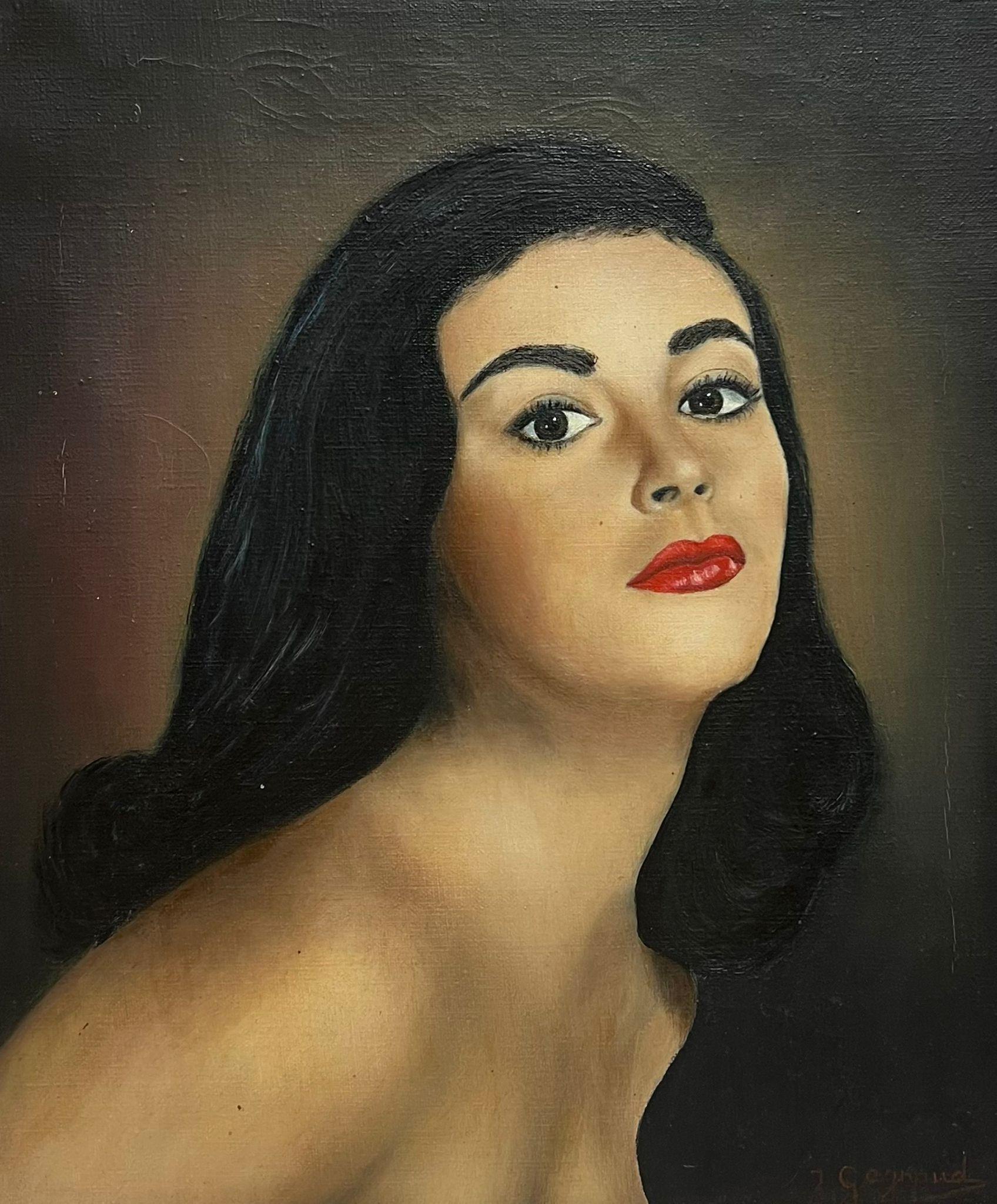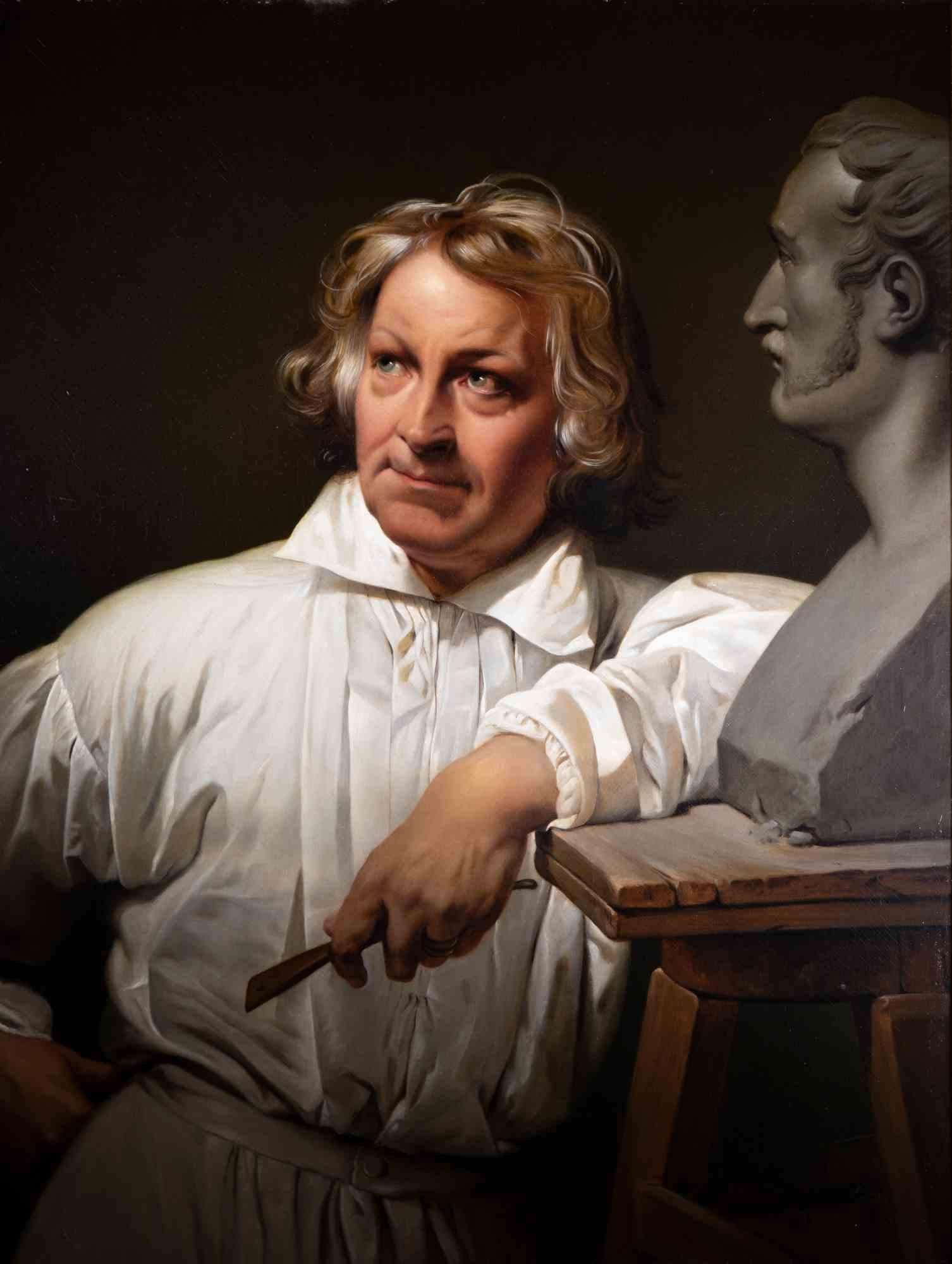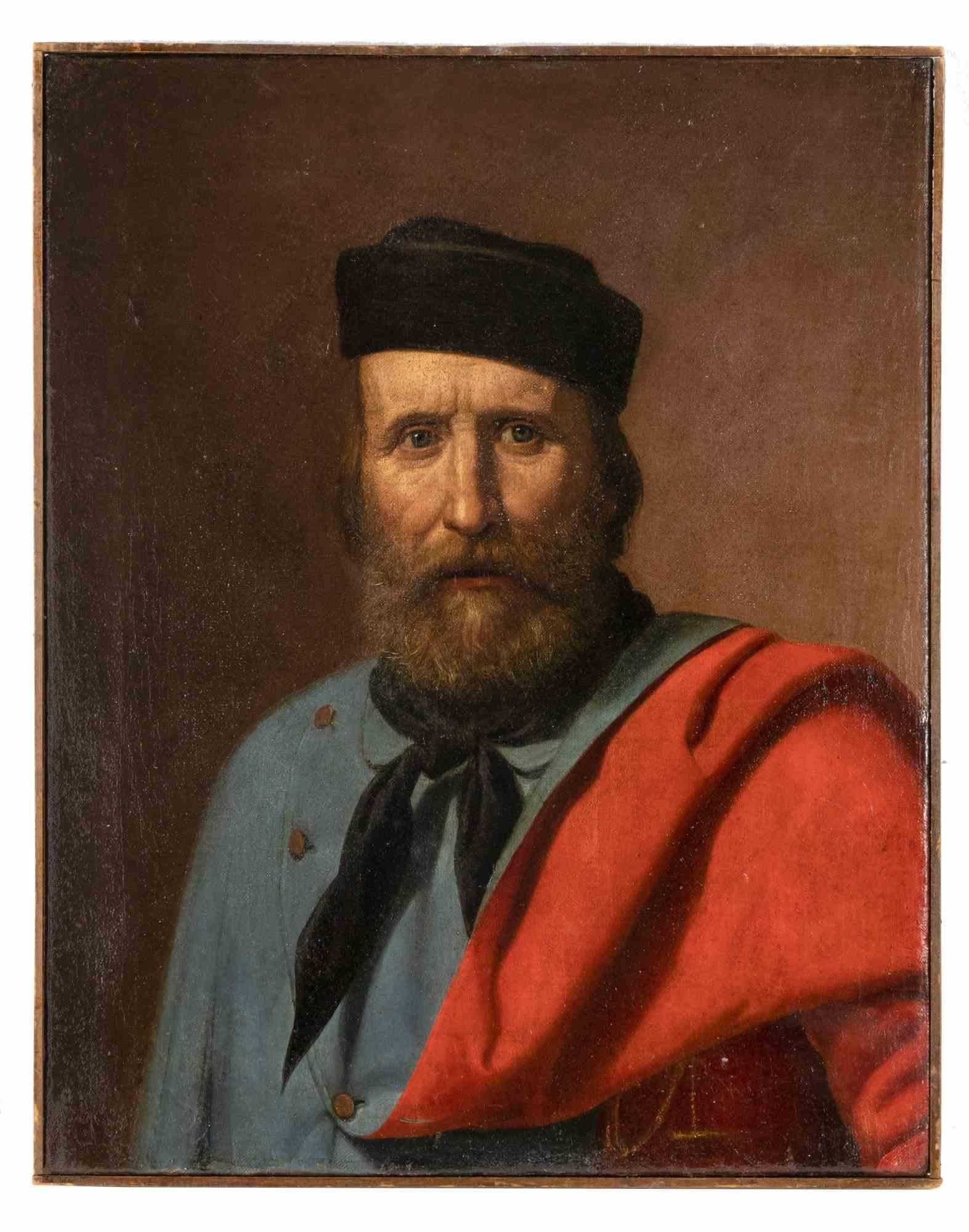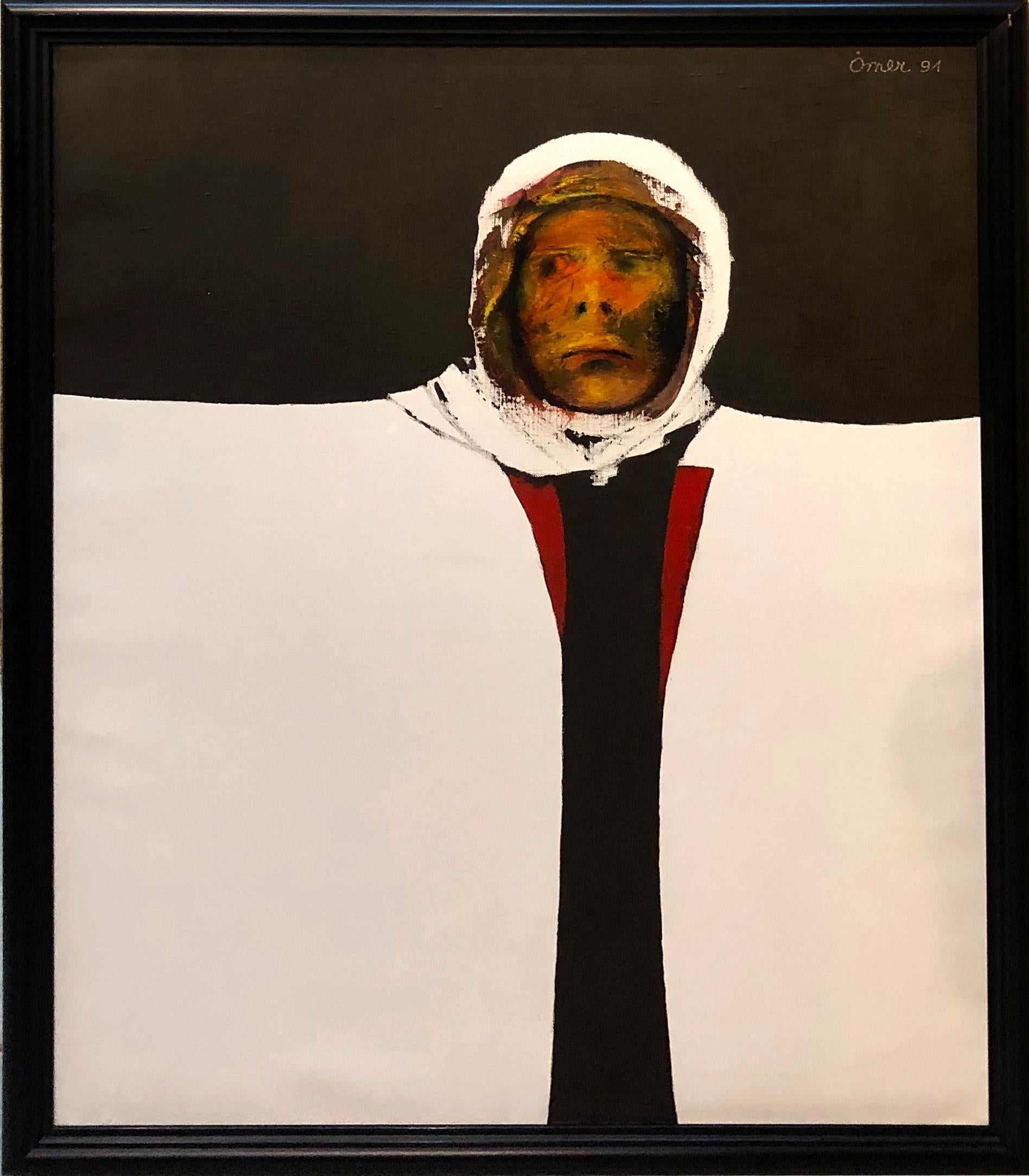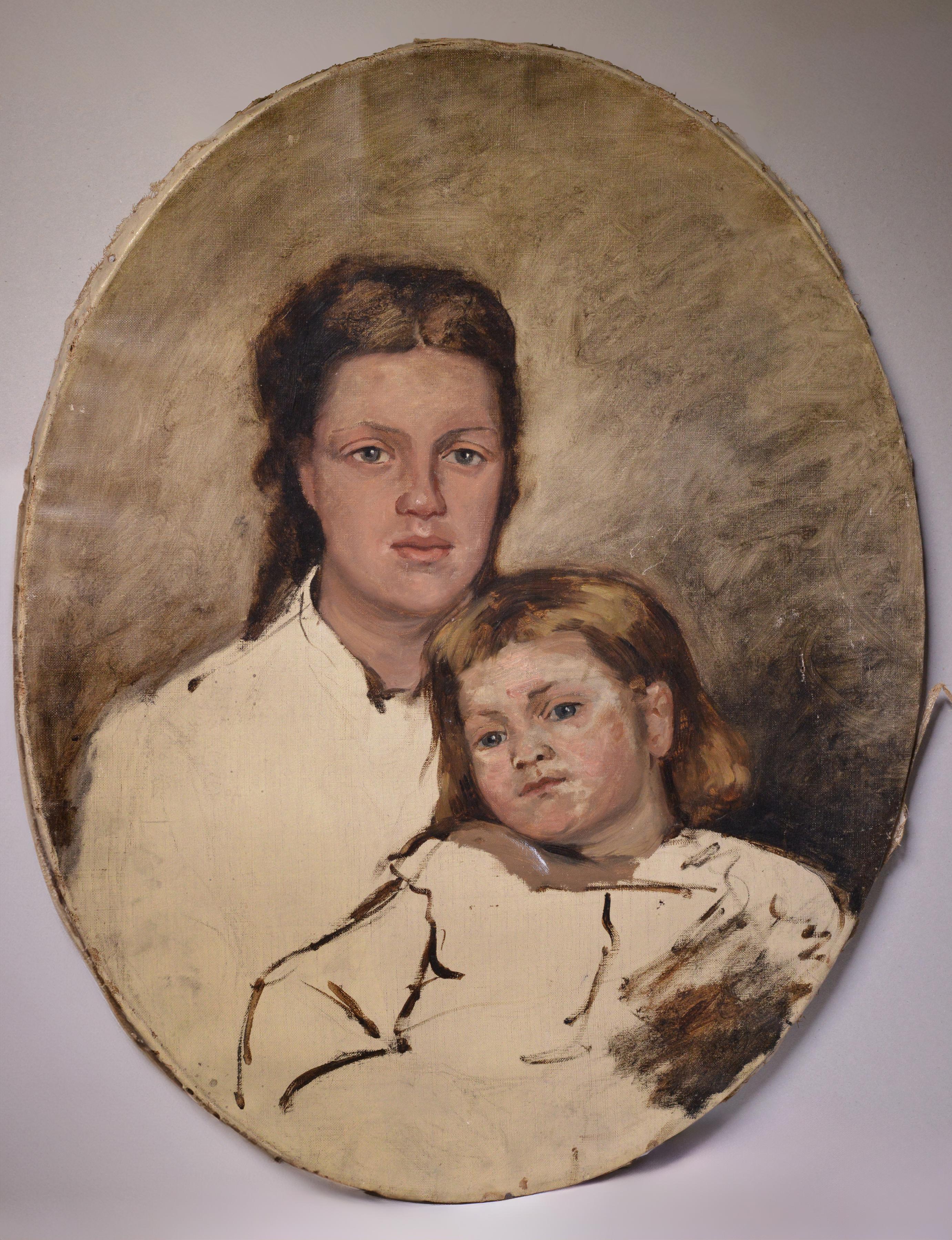Hans BurkhardtGirl with Cat oil painting by Hans Burkhardt1935
1935
About the Item
- Creator:Hans Burkhardt (1904 - 1994, Swiss)
- Creation Year:1935
- Dimensions:Height: 38 in (96.52 cm)Width: 26 in (66.04 cm)
- Medium:
- Movement & Style:
- Period:
- Condition:Good condition, appropriate for the age of this artwork. There is some craqueleur in the sky and left and right of her torso. The painting has been cleaned and stabilized.
- Gallery Location:Hudson, NY
- Reference Number:
Hans Burkhardt
Hans Gustav Burkhardt was a Swiss-American abstract expressionist artist. He was born on December 20, 1904, in Basel. Burkhardt’s paintings of the 1930s are part of the genesis of American abstract expressionism. He moved to Los Angeles in 1937 and represented the most significant bridge between New York and Los Angeles. He brought with him many of the nascent ideas of abstract expressionist painting that had been swirling among New York's artists, foremost among them, Arshile Gorky and Willem de Kooning. Working independently in Los Angeles, Burkhardt's experimental investigative approach parallelled and in many instances anticipated the development of modern and contemporary art in New York and Europe. His unique role as an important American painter is affirmed by the constant interest and continuing reassessment afforded his work. In 1992, Burkhardt was honored as the recipient of the Lifetime Achievement Award by the American Academy of Arts and Letters. His works are displayed across many museums, including the British Museum, Metropolitan Museum of Art, Whitney Museum of American Art, Los Angeles Museum of Contemporary Art and Norton Simon Museum. Burkhardt died on April 22, 1994, in Los Angeles.
- ShippingRetrieving quote...Ships From: Hudson, NY
- Return PolicyThis item cannot be returned.
- Girl in Elegant Dress oil painting by Ferdinand Wagner IILocated in Hudson, NYCanvas measures 21.25" x 19.5" and the frame measures 30.5" x 25.5" x 3" Ferdinand Wagner II studied art initially with his father, a vocational art teacher. Later he attended the Munich Academy of Arts working closely with Karl von Piloty. Much of Wagner's career focused on commissions as a decorative painter. He did ceiling frescos...Category
Late 19th Century Romantic Portrait Paintings
MaterialsOil, Canvas
- Pyromaniac's Pyre mixed media work by Mary Spencer NayLocated in Hudson, NYSigned and dated "Mary Spencer Nay '74" lower left. Titled "Pyromaniac's Pyre" verso. Exhibited: 1976-1977 "Mary Spencer Nay: Recent and Retrospective Works". J.B. Speed Art Museum...Category
1970s Modern Abstract Paintings
MaterialsFabric, Canvas, Rubber, Wood, Oil
- The Wood Decoy oil painting by Paul SampleBy Paul SampleLocated in Hudson, NYSigned "Paul Sample" lower right; titled and signed verso: "The Wood Decoy" & "Paul Sample" in pencil in the artist's hand. Paul Sample was an acclaimed Ne...Category
Mid-20th Century American Modern Still-life Paintings
MaterialsCanvas, Oil
- After Showers – Maine Coast, an the anti-aging oil painting by Edward ChristianaLocated in Hudson, NYA modernist coastal/dock scene by Edward Christiana. This painting is hand-signed "Edward Chrstiana '52" lower right. Exhibited: 1946 Munson-Williams-Proctor Institute; 9th Annual Exhibition 2004 Jameson Gallery, Portland, Maine; Edward Christiana (1912-1992) More about this artist: Edward Christiana was born in White Plains, New York in 1912. After high school the artist enrolled at Pratt Institute in Brooklyn, New York, graduating in 1933. After returning to the Mohawk Valley and obtaining work he enrolled in the School of Related Arts and Sciences at Munson-Williams-Proctor Arts Institute. In 1940, noted WPA artist William Palmer came to MWPAI to establish the School of Art, forerunner of the current Pratt at MWPAI. Mr.Christiana became involved with the School almost immediately and studied from 1941 until 1943 under Mr. Palmer, at which point he became an instructor himself and remained in this capacity until 1982. It was apparent at a very early stage in the development of Ed Christiana as an artist that he had a tremendous facility in the difficult medium of watercolor. By 1945, he had exhibited with the American Watercolor Society and did so again in 1947, 1949, and 1950. Mr. Christiana was even awarded the coveted William Church Osborne Purchase Prize in 1949 and 1950. He had his first one-man show at the Munson-Williams-Proctor Arts Institute in 1946, and would be so honored twice more; in 1954, and culminating with a major retrospective in 1989. By 1949 he was elected to the American Watercolor Society. He was represented in a group show at the Kraushaar Galleries in New York in 1951 and in another major one-man show at the Albany Institute of History and Art in 1956 where he received a purchase prize in oil. Strangely, after all of his early success in watercolor, he abandoned the medium in the early 50's to concentrate on oil painting. For over two decades he painted primarily in oil ranging from cubist inspired studies to his Marsden Hartley-inspired paintings of Mount Katahdin in the 1970's. By the mid 70's he had returned to watercolor. He was once quoted as saying "those who are familiar with my old paintings will be aware, I am sure, that in fact, they were not so far removed from watercolor, my technique in oils deriving positively from the aqueous medium." In the 1970's his watercolor style changed from the more wet and spontaneous style of the 40's to a dryer, slightly more controlled style, where the artist would often paint on dry paper, without wetting it prior to the application of paint. In the early 80's he returned to a wetter style, even more spontaneous than his method in the 40's. This culminated in his abstract work of the late 80's inspired partly by John Marin. Also, like Marin, Christiana painted representational work alongside very abstract work during the same period. Fellow artist Easton Pribble once said of Ed Christiana "If there were to be an honorary title -Painter Laureate- of the Mohawk Valley, Edward Christiana would certainly be the prime qualifier for that distinction." Christiana is known for his landscape views of the Mohawk Valley, her wild natural beauty as well as the architectural beauty of her towns and cities. He has also painted extensively in the Adirondacks as well as New Hampshire, Vermont, and especially Maine, which can almost be considered the artist's second home. He loved to paint the pastures, valleys, rivers, and waterfalls of the area as well as children playing on the grounds of his beloved Munson-Williams-Proctor Arts Institute and the neighborhoods surrounding it in Utica, New York. Edward Christiana painted almost right until his death in 1992. He was and still is a beloved man. No one I have talked to has had an unkind word to say about Ed Christiana, either as a teacher, artist, or friend. He was a prolific artist and was known to hand paint Christmas and Birthday cards...Category
Mid-20th Century Modern Landscape Paintings
MaterialsCanvas, Oil
- Paradise Estates by Emily SartorLocated in Hudson, NYEmily Sartor’s paintings are both precise and lush, often hinting at a romantic disaster. Using exaggerated color and dramatic paint handling, Sartor creates a world where experience...Category
21st Century and Contemporary Modern Landscape Paintings
MaterialsCanvas, Oil
- The Junkman's Serenade oil painting by Gregorio PrestopinoBy Gregorio PrestopinoLocated in Hudson, NYThis work epitomizes Prestopino's interest in social realism which captures a quiet interlude in the everyday life of an "everyman." It also provides a contrast for our expectations as we view a tough, blue collar worker, with no one watching, as he sings a melody to the birds. In an original frame measuring 49" x 39" x 3.25" Provenance: Edith Halpert's Downtown Gallery (label verso from 13 w. 113th street, where the gallery was located from 1926 until 1939) Private collection, NYC, c. 1935 By descent About this artist: Born in Little Italy in 1907, Gregorio Prestopino first set out to become a sign painter as the son of New York City immigrants. Instead, his talent provided a life-changing scholarship to the National Academy of Design, and for five years he studied drawing under C. W. Hawthorne. He spent the summer of 1934 at the MacDowell Colony in Peterborough, New Hampshire. His deep involvement with the colony led him to later serve as its director in 1954. Much of Prestopino’s work was in the vein of social realism. During the 1940s and 1950s he became deeply invested in portraying everyday Manhattan and Harlem scenes. He first became interested in the Ashcan school at the National Academy of Design, and remained committed to an interest in working with urban scenes. His lively treatment of people and events revealed his affinity for sixteenth-century artist Pieter Breughel...Category
Early 20th Century Modern Figurative Paintings
MaterialsOil, Canvas
- 1950's French Oil Painting Portrait of Beautiful Young Lady La NapolitaineLocated in Cirencester, Gloucestershire'La Napolitaine' by Jean Gagnaud, French mid 20th century signed oil on canvas, framed framed: 20 x 18.5 inches canvas: 15 x 13 inches provenance: private collection, France conditio...Category
Mid-20th Century Modern Portrait Paintings
MaterialsCanvas, Oil
- Portrait of Berthe Thorwaldsen with bust of Horace Vernet - 1833Located in Roma, ITPortrait of Berthe Thorwaldsen with Bust of Horace Vernet is an original modern artwork realized by the Circle of Horace Vernet (30 June 1789 – 17 Januar...Category
1830s Modern Figurative Paintings
MaterialsOil, Canvas
- Portrait of Giuseppe Garibaldi - Oil Painting - Late 19th CenturyLocated in Roma, ITPortrait of Garibaldi is an original modern artwork realized by an unknown Artist in the late 19th Century.Category
Late 19th Century Modern Portrait Paintings
MaterialsCanvas, Oil
- Girl Shepherd & Shepherd IILocated in Istanbul, 34The two works are for sale together. Together they are more meaningful. The two figures are side by side, looking at each other. Each work is 92X73 cm. If it is desired to be exhibited together, the frame of one is slightly larger than the other. However, the canvas dimensions are exactly the same size. If desired, the frame can be changed. The work is oil on canvas. The artist does not use white paint on white areas. That is the nature of the artist. More information is right below. Ömer Kaleşi...Category
1990s Modern Figurative Paintings
MaterialsOil, Canvas
- The FishermenLocated in London, GB'The Fishermen', oil on canvas, by Anna Costa (circa 1970s). Cassis is a small, Provencal fishing village in southern France, located about 45 minutes east of Marseille and 45 minute...Category
1970s Modern Figurative Paintings
MaterialsCanvas, Oil
- Oval Portrait of Mother and Daughter early 20 century Scandinavian Oil PaintingLocated in Stockholm, SESketch (or Non-Finito work) done by an unknown Scandinavian professional artist in a semi-modernist manner. A tender scene of family harmony, a daughter sits in her mother’s arms, co...Category
Early 20th Century Modern Portrait Paintings
MaterialsCanvas, Wood, Cotton Canvas, Oil
